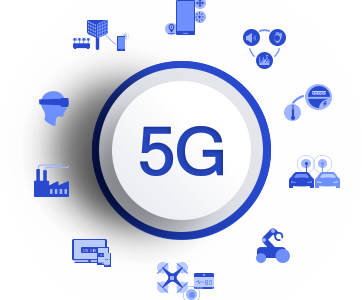By Ernst Wittmann
Over the past few months, we have seen a storm of hype about 5G, the next evolution in mobile network technology. Handset manufacturers are starting to come to market with 5G-ready smartphones, while many mobile network operators worldwide looking to deploy 5G networks in 2019 and 2020. KT in Korea, Rain in South Africa and Swisscom in Switzerland are examples of operators that have already launched commercial 5G services.
So what’s all the fuss about? Let’s start with speed. The companies that make network equipment for the operators estimate that 5G could initially deliver connections that are 10 to 20 times faster than 4G in a real-world setting (as opposed to some of the theoretical numbers that get thrown about). These speeds could increase in the years to come as operators deploy standalone 5G networks running at higher frequencies.
This boost in speed will be welcome for mobile consumers who want to make use of applications such as ultrahigh definition video streaming and conferencing, virtual reality, and streaming of online games through services such as Google’s upcoming Stadia. It could also help to turn 5G into a serious alternative to fibre in selected areas where it is too difficult or expensive to roll out fixed-line infrastructure.
But it will not be a quick fix for rural networks because its transfer distance is shorter than 4G or 3G. While 5G will boost speeds, it does require multiple towers to be close together to perform to its potential. That means that urban South Africans will be the ones who benefit from it most, at least when it is initially launched.
Less lag and delay
5G will also deliver a significant improvement in network latency—the delay between the time it takes for a packet of data to travel between network points. Lower latency will improve your experience with services such as VOIP calls (less jitter, echoing and delays), online gaming (less of ‘lag’ between pushing a button and seeing a response on screen) and video (less glitching and jerkiness).
But the real game-changing potential lies in how the enhanced speed and latency of 5G could enable new services—including some that we have not yet envisioned. The networking standard will be the foundation in top of which organisations, cities and governments will build truly intelligent networks of cars, robots, drones, wearable computers, sensors and more.
These devices will be able to communicate and react in real time, bringing the full potential of the Internet of Things to life. For example, 5G will help autonomous (self-driving cars) vehicles to communicate with each other, read live map and traffic data, and use video vision to safely navigate the roads. That all lies a few years in the future.
A long road ahead
When it comes to South Africa, widespread commercial availability of 5G may be some way off. Most of the larger network operators have piloted 5G, but are appealing to the regulator, ICASA, for network spectrum so that they can deploy it more widely. It seems likely that the evolution to 5G will be a gradual one, as was the transition to LTE/4G and 3G before it.
We’ll see 5G networks appearing in the major cities, at first, followed by wider national rollouts. Initially, the technology may make a difference only to early adopters who are already trying out 4K video streaming and virtual reality. But in less than five years from now, 5G will become ubiquitous and many of us will take its speed and the applications it enables for granted.
Ernst Wittmann, Global Account Director MEA & Country Manager – Southern Africa, at TCL
































